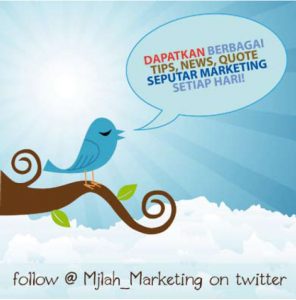Anthony Volastro | Strategic Content & News Partnerships, Segment Producer
Ever find yourself around the watercooler discussing with co-workers how your 401(k) is performing—likely leading to the increasingly popular "I'll never be able to retire" discussion? It's becoming a bit of a modern-day lament, begging the question: Why do Americans have this doom-and-gloom attitude about their golden years' financial situation?
Academic, institutional and media reports tend to serve up workers with warnings—often wrapping up with a "save now and save more" silver lining. It doesn't seem to be inspiring the masses. According to a Wells Fargo study, 37 percent of Americans expect to work until they are too sick to work or die.
Given the current state of America's retirement, it's worth taking a look at how we have arrived at this point--and, in particular, the retirement myths that have persisted for decades but aren't doing current savers as much good as they (and you) probably think. We asked retirement experts to weigh in.
Academic, institutional and media reports tend to serve up workers with warnings—often wrapping up with a "save now and save more" silver lining. It doesn't seem to be inspiring the masses. According to a Wells Fargo study, 37 percent of Americans expect to work until they are too sick to work or die.
Given the current state of America's retirement, it's worth taking a look at how we have arrived at this point--and, in particular, the retirement myths that have persisted for decades but aren't doing current savers as much good as they (and you) probably think. We asked retirement experts to weigh in.
Let's start with the biggest retirement myth of all....

Getty Images
Myth # 1: The 401(k) was created to boost your retirement dollars.
Not really. You might not have given it a second thought as to why you have a 401(k), the retirement savings standard, but the truth is, it happened by chance—not by some deliberate congressional plan.
It all started with the Revenue Act of 1978, spearheaded by Rep. Al Ullman, D-Ore., a staunch believer in tax cuts. In the 184-page bill was a rather simple and short provision called 401(k). It was essentially buried in the report and overlooked by nearly everyone. That is, until a Pennsylvania benefits consultant named Ted Benna noticed that the provision—established for such things as deferred-stock bonus plans—could be applied to joint tax-differed employee and company accounts. By 1982 companies such as Johnson & Johnson, PepsiCo, J.C. Penney and Hughes Aircraft Company were using 401(k) plans.
The kicker is that Benna has been critical of 401(k)s over the years, implying that he helped create a monster. He envisioned the plans to be simple plans on par with pensions, but more recently Benna has said he would "blow up the system" and start over again with something new.
It all started with the Revenue Act of 1978, spearheaded by Rep. Al Ullman, D-Ore., a staunch believer in tax cuts. In the 184-page bill was a rather simple and short provision called 401(k). It was essentially buried in the report and overlooked by nearly everyone. That is, until a Pennsylvania benefits consultant named Ted Benna noticed that the provision—established for such things as deferred-stock bonus plans—could be applied to joint tax-differed employee and company accounts. By 1982 companies such as Johnson & Johnson, PepsiCo, J.C. Penney and Hughes Aircraft Company were using 401(k) plans.
The kicker is that Benna has been critical of 401(k)s over the years, implying that he helped create a monster. He envisioned the plans to be simple plans on par with pensions, but more recently Benna has said he would "blow up the system" and start over again with something new.

Getty Images
Myth # 2: You need 80 percent of your current income level in retirement.
The idea that you need 80 percent of your current salary in retirement might be wildly exaggerated. This "rule of thumb" is taken to task in a new report by David Blanchett, Morningstar's head of retirement research: "When we modeled actual spending patterns over a couple's life expectancy ... the data shows that many retirees may need approximately 20 percent less in savings."
The report concluded that while the 80 percent rule is a decent number, the actual replacement goal varies depending on pre- and post-retirement lifestyles. Which means you may have more money than you think to invest today in additional (and critical) elder needs, including ... (cue the next retirement myth, please)
The report concluded that while the 80 percent rule is a decent number, the actual replacement goal varies depending on pre- and post-retirement lifestyles. Which means you may have more money than you think to invest today in additional (and critical) elder needs, including ... (cue the next retirement myth, please)

Getty Images
Myth # 3: You're too young to start paying for long-term care.
Long-term care could be the next major retirement crisis in America. The Department of Health and Human Services expects that some 70 percent of Americans over the age of 65 will need it at some point. Currently, only about 8 million Americans have long-term care coverage.
The topic has been getting more attention over the last few years as rates have been skyrocketing. The reason is that insurers didn't count on the fact that so few people would drop their coverage—about 1 percent—and that care costs would rise so much. It's forced many insurers to get out of the game. For policyholders, rates are rapidly rising an average of 40 percent.
The best move to make is to grab a long-term care policy while you are still working. "If you want long-term care insurance to pay some of the cost, you'll need to health qualify, and that starts to get tricky after age 65," said Jesse Slome, executive director of the American Association for Long-Term Care Insurance.
The topic has been getting more attention over the last few years as rates have been skyrocketing. The reason is that insurers didn't count on the fact that so few people would drop their coverage—about 1 percent—and that care costs would rise so much. It's forced many insurers to get out of the game. For policyholders, rates are rapidly rising an average of 40 percent.
The best move to make is to grab a long-term care policy while you are still working. "If you want long-term care insurance to pay some of the cost, you'll need to health qualify, and that starts to get tricky after age 65," said Jesse Slome, executive director of the American Association for Long-Term Care Insurance.
When is the best age to start putting your dollars in these policies? "The sweet spot is mid–50s to mid–60s," Slome said.

Getty Images
Myth # 4: Don't ever touch your principal.
The 4 percenters—those who tout the idea that you never withdraw more than that from your portfolio annually—might be too dogmatic in their belief. The rule is meant to establish a withdrawal rate that pulls out dollars earned from interest and investment gains, allowing your principal to remain intact. However, touching your principal is not out of the question.
"It really is okay to spend your capital. That's what it is there for," said Dr. Tony Webb, senior research economist at the Center for Retirement Research at Boston College.
Not touching your capital really applies to wealthy individuals who generate high returns and want to pass their capital onto heirs. For those individuals with $150,000 to $1 million in retirement savings, Webb said they should consider using some of the principal to supplement their income.
"It really is okay to spend your capital. That's what it is there for," said Dr. Tony Webb, senior research economist at the Center for Retirement Research at Boston College.
Not touching your capital really applies to wealthy individuals who generate high returns and want to pass their capital onto heirs. For those individuals with $150,000 to $1 million in retirement savings, Webb said they should consider using some of the principal to supplement their income.
The myth and mantra of "Never touch it" starts in a worker's retirement-saving days. According to Webb, many individuals carry over that mentality into retirement and are afraid to touch their nest egg. "The idea is to spend down in retirement; that's why you save. Saving is not a goal in itself."

Anthony Bradshaw | Getty Images
Myth # 5: You can bank on your annuity.
Annuities have always been considered an option for extra retirement savings after maxing out your 401(k), IRAs and making your pension contributions. There is a perception that annuities are a source of guaranteed income. Well, think again: They aren't. According to Mercer Bullard, a law professor at the University of Mississippi and former assistant chief counsel in the Securities and Exchange Commission's Division of Investment Management, an annuity "won't be there if the insurance company fails and the resolution of that failure does not include full coverage of annuity payouts."
Bullard said that as regulators continue to allow insurance companies to take on more risk, the risk of your annuity taking a bath is increasing. The International Monetary Fund warned in its Global Financial Stability report earlier this year that life insurers were amassing positions in risky investments that could threaten their solvency—risky bets they were taking to make up for a shortfall in future obligations.
Bullard said that as regulators continue to allow insurance companies to take on more risk, the risk of your annuity taking a bath is increasing. The International Monetary Fund warned in its Global Financial Stability report earlier this year that life insurers were amassing positions in risky investments that could threaten their solvency—risky bets they were taking to make up for a shortfall in future obligations.
Myth # 6: Retirement shortfall warning bells are waking up Americans.
Studies and reports regarding doomsday scenarios for Americans in retirement abound, most warning that we are not saving enough and need to make up for lost time. According to the Plan Sponsor Council of America, the country as a whole saved more in their 401(k)s last year—6.8 percent of their salary vs. 6.4 percent in 2011. Yet according to Wells Fargo, only 52 percent of Americans are confident they will have enough saved to retire.
More and more workers are aware of the grim outlook when it comes to actually attaining the "American retirement dream" of golfing in Florida and finally taking those once-in-a-lifetime trips abroad. So how come more Americans are not stepping up their game?
For one, the country is still emerging from the worst economic crisis since the Great Depression. But there is a psychological factor that plays a big part in retirement-saving complacency.
"The present feels much more real and important than projecting a potential problem in an uncertain future." said Dr. Pamela Rutledge, director of the Media Psychology Research Center. The repeated phrase of "not saving enough" has little effect, because it does not translate into something that has been experienced, Rutledge said.
More and more workers are aware of the grim outlook when it comes to actually attaining the "American retirement dream" of golfing in Florida and finally taking those once-in-a-lifetime trips abroad. So how come more Americans are not stepping up their game?
For one, the country is still emerging from the worst economic crisis since the Great Depression. But there is a psychological factor that plays a big part in retirement-saving complacency.
"The present feels much more real and important than projecting a potential problem in an uncertain future." said Dr. Pamela Rutledge, director of the Media Psychology Research Center. The repeated phrase of "not saving enough" has little effect, because it does not translate into something that has been experienced, Rutledge said.
Take the antismoking campaign that began in the early '80s. The ads and commercial spots had little effect. It wasn't until smoking-related deaths became more prevalent that folks began to take action.
There is also a habit-changing component to saving. "Change is hard. Saving money, when you haven't been saving means making a change," Rutledge said. Saving more requires you to break a habit, which is an upset to your normal flow, and making even small changes—like upping your contributions by a small percentage—can be a challenge for some.
Yet it's not a myth that if you make little changes, the rewards could end up being great. Changes often lead to positive results and reinforcement. "In behavior change, small changes create small victories that lead to larger and more frequent changes," Rutledge said.
There is also a habit-changing component to saving. "Change is hard. Saving money, when you haven't been saving means making a change," Rutledge said. Saving more requires you to break a habit, which is an upset to your normal flow, and making even small changes—like upping your contributions by a small percentage—can be a challenge for some.
Yet it's not a myth that if you make little changes, the rewards could end up being great. Changes often lead to positive results and reinforcement. "In behavior change, small changes create small victories that lead to larger and more frequent changes," Rutledge said.
—By Anthony Volastro, Segment Producer, CNBC






